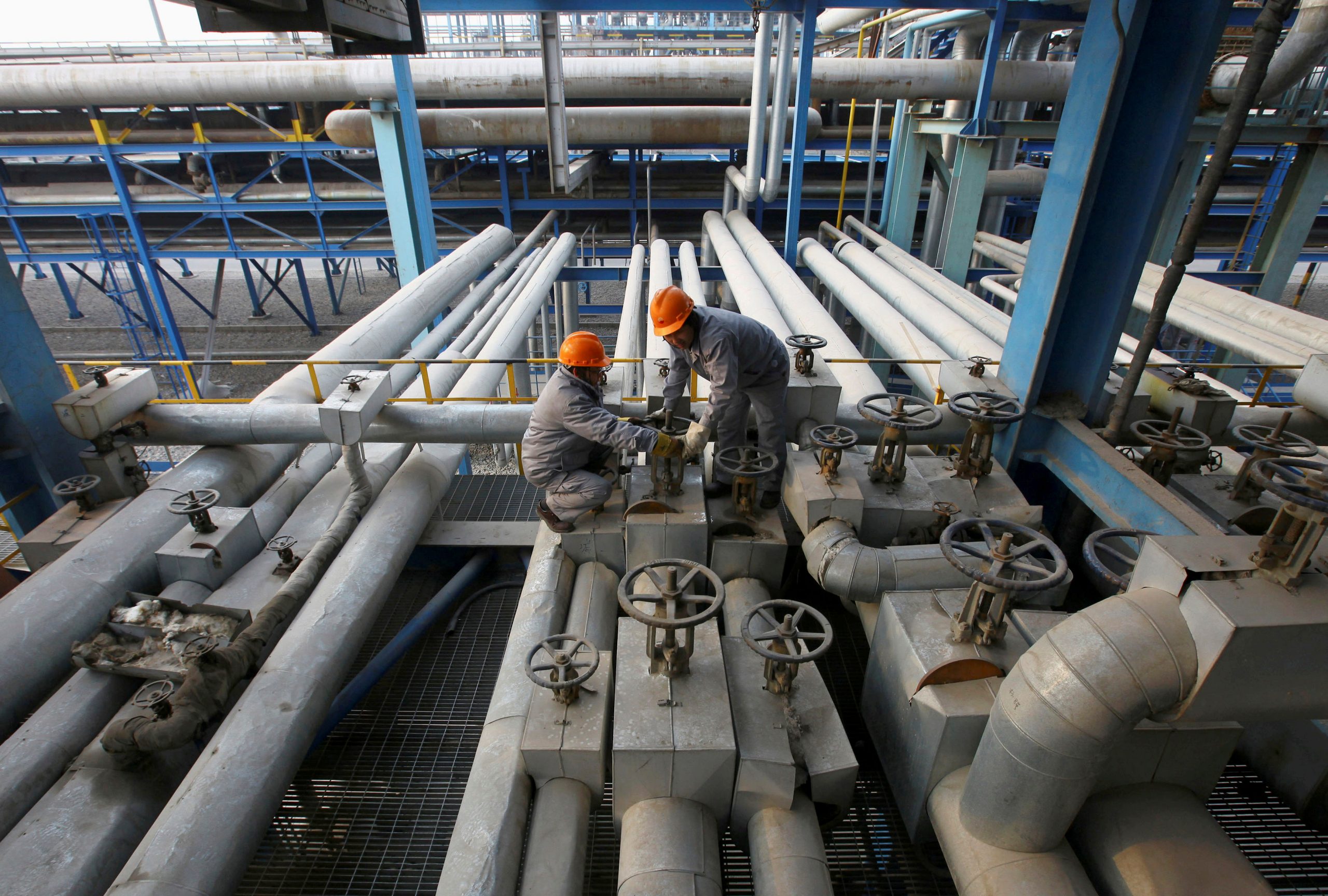Employees close a valve of a pipe at a PetroChina refinery in Lanzhou, Gansu province.
Stringer | Reuters
China’s plan to put tariffs on U.S. crude oil shows it is willing to take more economic pain in the trade war than some in the markets have expected, according to a Bank of America Merrill Lynch’s commodities analyst.
“They’re hurting themselves on the domestic front by making it more difficult for domestic refineries to make money. The’re hurting themselves on the international front by making their refineries less competitive,” said Francisco Blanch, head of commodities and derivatives research at BofA.
Blanch said changes in shipping fuel requirements that take place early next year could “create a pretty big premium on light sweet grades which are mostly coming out of the U.S. these days.” The world’s refineries are expected to seek more of the lighter crude to make the low sulfur fuel, required globally by the International Maritime Organization.
“China will have to bid up international barrels,” said Blanch, noting it would be similar to what happened in the soy bean market. China stopped buying U.S. soy beans but has been paying more to buy Brazilian beans.
“It certainly is not very rational. it’s hard to quantify because we haven’t seen the full extent of the IMO 2020 implementation,” he said. The rule affects about 3 million barrels a day of heavy bunker fuel, which ships must stop using or use with scrubbers.
In announcing new tariffs on $75 billion in U.S. goods Friday, China said it would put a 5% tax on oil starting Sept. 1. The U.S. now exports more than 2.5 million barrels a day of oil, while it produces over 12 million barrels a day.
Blanch said China was not a big buyer of U.S. crude, and it has already cut imports from the U.S. It imported 120,000 barrels a day for the first half of the year, with most of it coming in the first quarter, he said.
By contrast, China’s imports of Saudi Arabian crude are rising and now total about 1.9 million barrels a day. But Saudi Arabia exports a heavy grade of crude oil.
Blanch estimates that the margin hit per barrel for China from the tariffs would be about $3, if China were importing and refining U.S. crude. The average refining margins around the world are $5 to $7, he said.
“We are skeptical that this is going to get resolved,” Blanch said, “and part of it is that China’s pain threshold is high.”


 Signal2forex.com - Best Forex robots and signals
Signal2forex.com - Best Forex robots and signals




